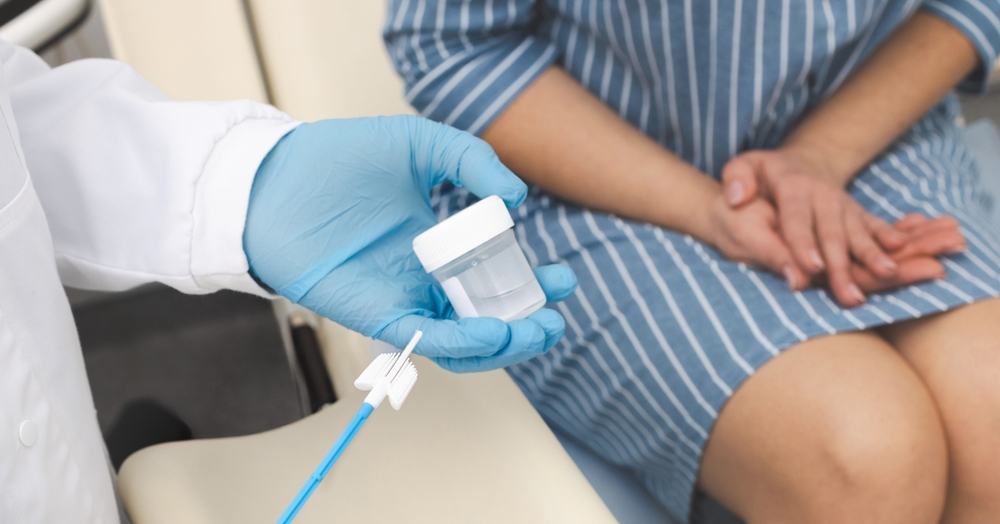International targets have been set to eliminate cervical cancer and Australia Government strategies are in place to achieve this. For this to benefit all diverse communities, authentic cross-sector partnership and community engaged practices are needed.
In 2020, the World Health Organization (WHO) challenged all member countries (which includes Australia) to eliminate cervical cancer as a public health problem by 2030. This is because cervical cancer is highly preventable, with existing disease rates strongly influenced by the unfair distribution of access to preventive health services. To eliminate cervical cancer globally, the WHO outlines a 90-70-90 strategy. This strategy outlines that WHO member countries should aim for 90% of people with a cervix vaccinated for human papillomavirus (HPV), 70% participating in cervical screening twice (once by age 35 and again by age 45), and treating 90% of women with cervical disease.
In Australia, we have the resources to aim higher. Guided by the National Strategy for the Elimination of Cervical Cancer our targets are 90% HPV vaccination coverage for all genders, 70% of people with a cervix participating in 5-yearly screenings and 95% of individuals with cervical disease treated. To support these aims, the Australian Government has committed $48.2 million over 4 years, with $8.3 million dedicated to support priority population groups known to experience systematic health service barriers.
As highlighted above, cervical cancer rates are strongly influenced by inequitable barriers to preventive health care. While Australia has greatly reduced the rate of cervical cancer through effective screening and treatment programs, the latest Australian Cervical Cancer Control report shows incidence rates for Aboriginal and Torres Strait Islander women are still three times higher (12.3 per 100 000 women) than the WHO elimination target (4 new cases per 100 000 women).
Additionally, culturally and linguistically diverse (CALD) community members face unique barriers to cervical cancer prevention and care. Despite known challenges to HPV vaccination and cervical screening programs, like limited access to interpreters, a lack of translated materials and unfamiliarity with the health care system, CALD status measures are not routinely collected in health registries. Therefore, there is little statistical data to indicate which local CALD communities are, or are not, accessing cervical cancer screening, vaccination and treatment. Given this lack of data, the National Strategy for the Elimination of Cervical Cancer and the Australian Cancer Plan outline strategic goals to address cancer disparities faced by CALD communities.

What can the government do?
Based on our research and work experiences, we believe that lessons learned from the COVID-19 pandemic can be applied to cervical cancer elimination for CALD communities. During the pandemic, government partnerships and CALD community research collaborations were able to work together and remove many of the systematic barriers to COVID-19 testing and vaccination. This approach can be used again to achieve the aims outlined in the National Strategy for the Elimination of Cervical Cancer and the Australian Cancer Plan. Given this, we would like to see a whole of government approach to:
- Work with key CALD stakeholders to develop a culturally appropriate approach to collecting and interpreting linked cultural, ethnic and linguistic data.
Without better CALD data linkage, we can’t tell if broad population data hides health inequities experienced by CALD communities. But knowing which socio-cultural status measures to link is complex. As reported in an Australian Institute of Health and Welfare report, data combining measures like main language spoken at home, ancestry and/or country of birth data will highlight one type of health picture. In another CALD community, you may need to link religious affiliation and period of residence in Australia instead. To know which CALD status measures to link to, the Australian Institute of Health and Welfare report recommends partnering with relevant CALD stakeholders to develop and contextualise CALD status measures. We support this recommendation and call on governments to take this approach as they begin larger linked data projects.
- Build on and adapt the effective multicultural community policies and partnerships developed during the COVID-19 vaccination rollout.
We urge all levels of government to build on successful CALD community partnerships formed during the COVID-19 pandemic and put cervical cancer prevention on the agenda. At the federal level, this could be achieved through the CALD Health Advisory Group. At a local level, our co-authors working on the ground cite successful community engagement practices through partnering with school and cultural leaders, establishing effective local advisory groups, hosting community events and movie screenings and developing appealing multilingual resources.
- Incorporate National Strategy for the Elimination of Cervical Cancer recommendations across all relevant government policies.
Health promotion and prevention program planning can occur at local, state, territory and federal government levels. Therefore key performance indicators around immunisation and multicultural health must be aligned with the National Strategy for the Elimination of Cervical Cancer, the Australian Cancer Plan and the proposed National Immunisation Strategy. This alignment has started in New South Wales and taking a similar approach in other states and territories will optimise the use of resources, including health service workers.
- Sustainably resource and support participatory health promotion activities and interventions.
The National Strategy for the Elimination of Cervical Cancer and the Australian Cancer Plan emphasise co-designed, locally tailored and culturally safe preventive cancer programs and services. From our research experiences, two-way community engaged practices, like participatory action research, support better communication and collaboration with CALD stakeholders and partners, making them ideal for addressing more sensitive health topics like sexual health. To build better and more effective community partnerships, funding commitments are needed, as conducting two-way community engagement takes time, effort and resources. This is particularly important given the need to regain community trust in governments and vaccination programs after COVID-19.
Final thoughts
To be a global leader of cervical cancer elimination, the Australian Government must remove unfair obstacles to preventive health care. Effective intersectoral alliances can influence cervical cancer prevention and serve as a model for multicultural health collaborations across other immunisation programs and cancer screening. Implementing our recommendations will not only show the world how one nation can eliminate cervical cancer but how to take an authentic approach to reduce CALD health service barriers.
Kathleen Prokopovich is a PhD candidate with the Australian Centre for Health Engagement, Evidence and Values at the University of Wollongong and a Senior Research Officer at the National Centre of Immunisation Research and Surveillance.
A/Prof. Frank Beard is a public health physician and is currently Associate Director, Surveillance, Coverage, Evaluation and Social Sciences at the National Centre for Immunisation Research and Surveillance, and Associate Professor in the School of Public Health, The University of Sydney.
Biljana Stanoevska is a bicultural Health Educator with the Multicultural and Refugee Health Service – Illawarra Shoalhaven Local Health District.
Caroline Scott is a retired Clinical Nurse Consultant with the school vaccination program operating in the Western Sydney Local Health District.
Prof. Annette Braunack-Mayer is the current Head of the School of Social Sciences at the University of Wollongong and her research combines social and ethical analyses of health systems, policies and practices.
A/Prof. Lyn Phillipson is Mid-Career Research Fellow with the School of Social Sciences at the University of Wollongong and she is known for her community engaged approach to undertaking research about service utilisation and cancer help-seeking in CALD communities.
The authors do not work for, consult, own shares in or receive funding from any company or organisation that would benefit from this article, and have disclosed no relevant affiliations beyond their academic and employment appointments.

 more_vert
more_vert
Dear Tania,
I appreciate you sharing this story. I’m so sorry for your loss. Sending heartfelt condolences to you and your family.
My daughter died from cervical cancer in 2017. She is anglo, high health literate family background, but lived a bit chaotically (ie no regular GP). Our family will never recover, and her daughter has lost her Mumma. Any effort to improve information to vulnerable communities and increase screening, vax etc is critical.